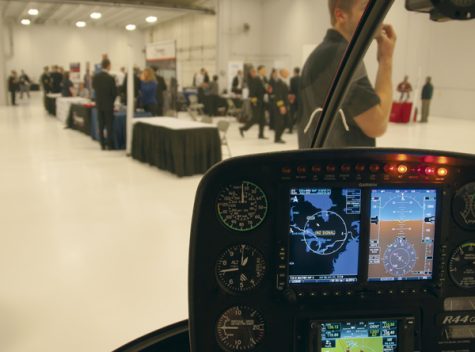Allegiant Airlines’ safety record a cause for concern
March 24, 2017
When spring break is mentioned, travelling to tropical getaways often comes to mind. Students that can afford to, often fly there.
In Grand Forks, University of North Dakota students considering a voyage have two options at the nearby Grand Forks International Airport: they can take a Delta connection flight to Minneapolis- Saint Paul International Airport, or drive to the larger airport. They also have the option of flying Allegiant Airlines, a low cost carrier based in Las Vegas, which operates flights out of GFK to Las Vegas, Phoenix-Mesa and Orlando (flights to Orlando will end April).
“It’s cheap,” Sam Landau, a Fish and Wildlife Biology major and Washington state resident who has flown the airline at least six times. “A lot cheaper than Delta.”
What many at UND may not know is that Allegiant has come under scrutiny the past few years in regards to the safety of their fleet: a mixture of planes from the Airbus A320 family, Boeing 757s and aging McDonnell-Douglas MD-80s.
Last November, the Tampa Bay Times published their results of an investigation into the airline’s string of mechanical issues. Out of the airline’s 86 aircraft, 42 of them-—almost half the fleet—were forced to land in 2015 due to various mechanical issues, a majority of them related to the engines. That year, there were 77 serious issues alone, according to the report.
Maintenance wasn’t the only issue. In July 2015, an Allegiant flight into Fargo had to declare an emergency because they didn’t have enough fuel to divert to Grand Forks (the Fargo airport was closed for an air show), an incident that caused the Federal Aviation Administration (FAA) to send a warning to the airline in regards to their operations.
In another case, a pilot who made an emergency landing after fumes were reported in the cabin was fired over his decision; the pilot is currently suing the airline over the incident, with a trial scheduled in Nevada for May 31.
The CEO of Allegiant, Maurice Gallagher, Jr., has also been under scrutiny. Gallagher previously operated ValuJet Airlines, a low cost carrier which merged with AirTran following the May 1996 crash of Flight 592 into the Florida Everglades. Flight 592, flown by a plane related to the MD-80, crashed following an inflight fire of illegal cargo, killing all 110 on board, topping off a reputation of poor safety.
The Tampa Bay Times in particular had been tracking Allegiant for some time, as the airline is a major provider for their local St. Petersburg-Clearwater International Airport.
In regards to one of their stories, Gallagher stated in January 2015 that the story “repeats the faulty premise that something is wrong with Allegiant. Let me be clear: there is not.”
After the paper’s investigation was released though, he changed his tone, admitting the string of failures was too high.
“We want to be well-known as being reliable and on-time, and obviously safe, and that’s an important part of our brand,” Gallagher said on October 26. “And we’re going to make sure we do those things.”
The FAA had also launched an investigation of the airline, but did not find any outstanding issues. The FAA itself, however, has been criticized for failing to crack down on the airline.
Meanwhile, Allegiant continues to operate, flying to 177 destinations in the United States. And although their rate of mechanical failure is much higher than other airlines, flying commercial aviation is still widely considered the safest way to travel. In all of the incidents of forced landings, no passengers or crew were hurt.
In any case, Landau wasn’t overly concerned.
“I don’t fly enough for it to make much of a difference,” he said.
Allegiant Air has a desk in the GFK terminal, with varying hours. More information about them can be found at their website, allegiantair.com.
Connor Johnson is a staff writer for The Dakota Student. He can be reached at [email protected]





